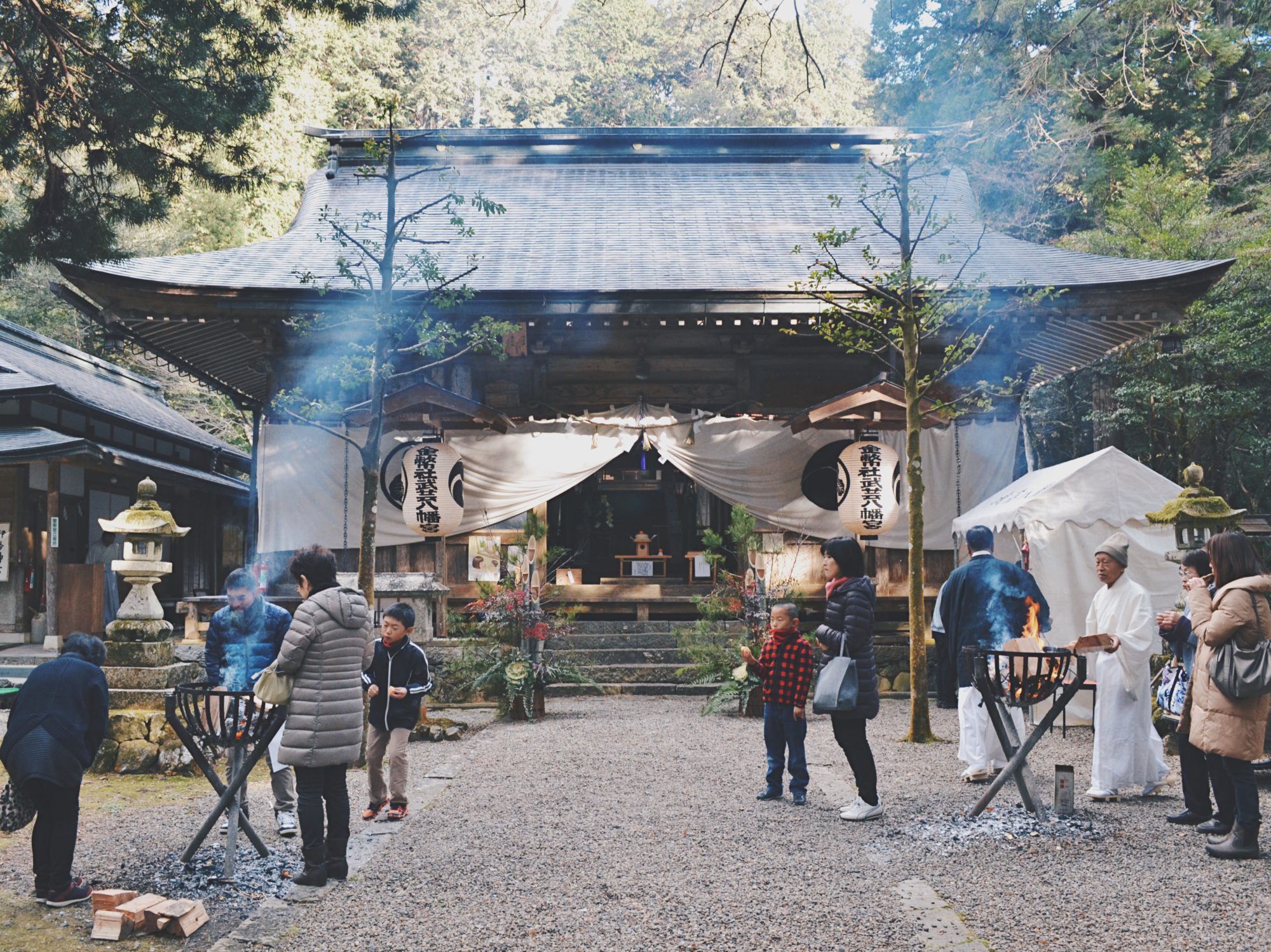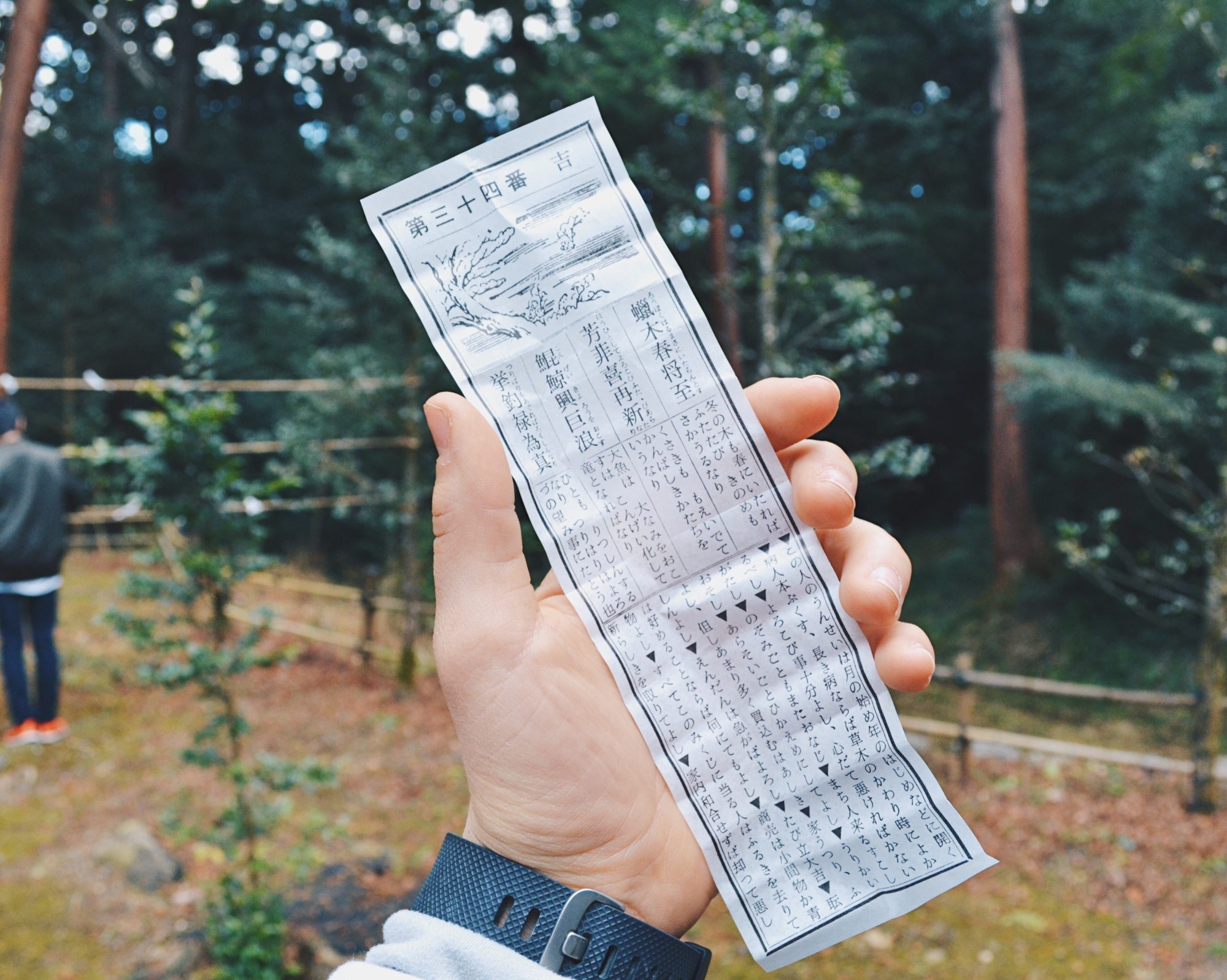I toss a coin and pull a strip of paper from the box. Tightly bound, I pulled open the scroll and check my fortune for the year ahead: 吉 (kichi)
On January first, I joined my uncle’s family for, “hatsumode,” or, the first visit to a temple in the new year. We strolled through the tranquil forest, down the calm walkway lined with stone structures, leading the way deeper into the green.

Throw a coin. Two bows, two claps, one more bow.
We all drew predictions on the blessing side, the Isogawa clan is lucky.
These fortune-telling strips are called, “omikuji,” and are found at various temples across Japan.
Typically, you’ll offer a small donation to the temple, draw from a metal or wooden box, and find the corresponding paper with your fortune. The Japanese written on these fortunes are a bit cryptic, and can be interpreted a number of different ways (like most fortune-telling activities).
The initial information you’ll see is the overall ‘luck’ of your draw. Here’s a somewhat-universal listing:
大吉(Daikichi) – Great Blessing
中吉(Chukichi) – Middle Blessing
小吉(Shokichi) – Small Blessing
吉(Kichi) – Blessing
半吉(Hankichi) – Half Blessing
末吉(Suekichi) – Future Blessing
末小吉(Sueshokichi) – Small Future Blessing
凶(Kyo) – Curse
小凶(Kokyo) – Small Curse
半凶(Hankyo) – Half Curse
末凶(Suekyo) – Future Curse
大凶(Daikyo) – Great Curse
The text following your fortune may be different based on which temple you visit. From love to employment, travel and pleasure, the omikuji covers a variety of topics, leaving you with a wealth of knowledge to face the new year.
Mine mentioned positive change with the coming of new seasons, big fish transforming into dragons (cool), and that love may take a bit longer (…great).
Whether you believe in it or not, it’s a fun activity to enjoy if you are in Japan.
